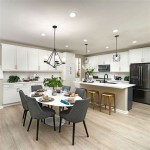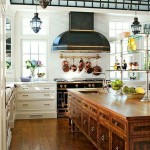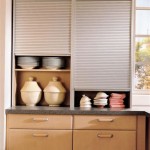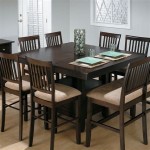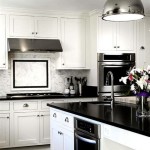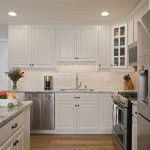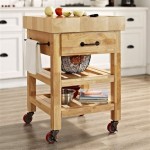How To Pick A Kitchen Backsplash: A Comprehensive Guide
The kitchen backsplash, often considered an aesthetic accent, is in fact a critical design element that serves both functional and decorative purposes. It protects the wall behind the countertops from water, grease, and food splatters, while also contributing significantly to the overall visual appeal of the kitchen. Selecting the right backsplash involves careful consideration of various factors, including material, style, color, texture, and budget. This detailed guide provides a comprehensive overview of how to navigate the process of choosing a kitchen backsplash that meets both practical needs and aesthetic preferences.
Understanding the Functional Requirements of a Backsplash
Before delving into the aesthetic considerations, it's crucial to understand the functional requirements of a kitchen backsplash. Its primary function is to protect the wall from the daily wear and tear of kitchen activities. This means the selected material must be durable, water-resistant, and easy to clean. The area behind the stove is particularly vulnerable to grease splatters, necessitating a surface that can withstand frequent cleaning without damage. Certain materials, like porous stone, may require sealing to prevent staining and water absorption. Careful consideration of these functional aspects ensures that the backsplash will perform its protective role effectively for years to come.
Durability is a cornerstone consideration. Kitchens are high-traffic areas, and a backsplash needs to withstand constant cleaning and potential impacts from cookware or utensils. Materials like ceramic tile, porcelain tile, and glass are known for their durability and resistance to scratches and stains. These materials are less likely to require significant repairs or replacements over time. On the other hand, natural stone options, while aesthetically pleasing, may require more maintenance and attention to ensure their longevity.
Water resistance is also a critical factor, especially in areas near the sink and stovetop. Water damage can lead to mold and mildew growth, which can compromise the structural integrity of the wall and pose health risks. Materials like glass, ceramic, and porcelain are inherently water-resistant, making them excellent choices for a kitchen backsplash. Natural stone, if chosen, needs to be properly sealed with a high-quality sealant to prevent water penetration.
Ease of cleaning is another important aspect. A backsplash that's difficult to clean will quickly become an eyesore. Smooth, non-porous surfaces are generally easier to wipe down and maintain. Textured surfaces, while potentially more visually appealing, may require more effort to clean due to the crevices that can trap dirt and grease. Consider the amount of time and effort one is willing to dedicate to cleaning when selecting a material.
Exploring Material Options for Kitchen Backsplashes
The market offers a wide array of materials suitable for kitchen backsplashes, each with its unique characteristics, advantages, and disadvantages. Common options include ceramic tile, porcelain tile, glass tile, natural stone, metal, and even peel-and-stick options. Understanding the properties of each material is vital for making an informed decision that aligns with both functional requirements and aesthetic goals.
Ceramic tile is a classic and cost-effective choice. It is durable, water-resistant, and available in a vast range of colors, sizes, shapes, and patterns. Ceramic tiles are relatively easy to install and maintain, making them a popular option for budget-conscious homeowners. However, ceramic tile is not as durable as porcelain tile and may be more prone to chipping or cracking under heavy impact.
Porcelain tile is a denser and more durable option than ceramic tile. It is highly resistant to water, stains, and scratches, making it an excellent choice for high-traffic areas like the kitchen. Porcelain tiles are available in a wide variety of styles, including those that mimic the look of natural stone or wood. While more expensive than ceramic tile, porcelain tile offers superior performance and longevity.
Glass tile offers a sleek and modern aesthetic. Glass tiles are non-porous, making them highly resistant to water and stains. They are also easy to clean and maintain. Glass tiles come in a variety of colors, sizes, and finishes, including frosted, glossy, and iridescent options. One potential drawback of glass tile is its transparency, which can make imperfections in the underlying wall more visible. A skilled installer is essential for achieving a flawless finish.
Natural stone options, such as granite, marble, slate, and travertine, offer a luxurious and sophisticated look. Each type of stone has its unique veining and coloration, adding character and texture to the kitchen. However, natural stone is more porous than ceramic or porcelain and requires sealing to prevent staining and water damage. Natural stone can also be more expensive and require more maintenance than other materials.
Metal backsplashes, such as stainless steel, copper, and aluminum, offer a contemporary and industrial aesthetic. Metal is durable, heat-resistant, and easy to clean. Metal backsplashes can be installed in sheets or tiles, offering flexibility in design. However, metal surfaces can be prone to scratches and dents, and they may require special cleaning products to maintain their shine.
Peel-and-stick backsplashes are a convenient and affordable option for DIY projects. These backsplashes consist of thin, self-adhesive tiles that can be easily applied to the wall. Peel-and-stick backsplashes are available in a variety of styles, including those that mimic the look of ceramic, glass, and stone. However, they are not as durable or water-resistant as traditional tile options and may not be suitable for high-moisture areas or behind the stovetop. The adhesive can also degrade over time, leading to peeling or bubbling.
Matching Backsplash Style with Kitchen Design
The kitchen backsplash should complement the overall design style of the kitchen. A well-chosen backsplash can enhance the kitchen's aesthetic appeal and create a cohesive and harmonious look. Consider the existing cabinetry, countertops, flooring, and appliances when selecting a backsplash style. The backsplash should integrate seamlessly into the existing design while also adding its unique touch.
For a traditional kitchen, classic materials like ceramic tile or natural stone are often a good choice. Subway tiles, with their clean lines and timeless appeal, are a popular option for traditional kitchens. Natural stone backsplashes, such as marble or granite, can add a touch of elegance and sophistication. Neutral colors, such as white, cream, and beige, tend to work well in traditional settings.
For a modern kitchen, sleek and minimalist materials like glass tile or stainless steel are often preferred. Geometric patterns and bold colors can add a contemporary edge. Consider using large-format tiles to minimize grout lines and create a seamless look. A backsplash that extends to the ceiling can also create a dramatic and modern effect.
For a farmhouse kitchen, rustic materials like reclaimed wood or brick can add warmth and character. Subway tiles in muted colors, such as sage green or light blue, can also complement the farmhouse aesthetic. Consider using a textured backsplash to add visual interest. A beadboard backsplash can also add a touch of farmhouse charm.
Consider the color palette of the kitchen when selecting a backsplash color. A backsplash can either blend in with the existing colors or serve as a pop of color. If the kitchen already has a lot of color, a neutral backsplash might be a good choice. If the kitchen is mostly neutral, a colorful backsplash can add personality and vibrancy. When selecting a color, consider the undertones of the existing cabinets, countertops, and flooring.
Texture is another important consideration. A textured backsplash can add visual interest and depth to the kitchen. Options include textured tiles, natural stone with a rough finish, or even a mosaic backsplash with different materials and sizes. A smooth backsplash can create a clean and modern look, while a textured backsplash can add warmth and character. Consider the overall style of the kitchen when deciding on a texture.
Lighting also plays a crucial role in how the backsplash appears. Under-cabinet lighting can highlight the texture and color of the backsplash, while natural light can create a bright and airy feel. Consider the lighting conditions in the kitchen when selecting a material and color. A dark backsplash might look stunning under bright lighting but could appear too dark in a poorly lit kitchen.
Ultimately, choosing the right kitchen backsplash requires a blend of practicality and aesthetics. By considering the functional requirements, exploring the various material options, and matching the backsplash style with the overall kitchen design, one can create a kitchen that is both beautiful and functional.

Choosing Kitchen Backsplash Tile Abby Organizes

How To Pick The Perfect Kitchen Backsplash For

How To Pick The Best Backsplash For Your Kitchen Growit Buildit
How To Pick The Perfect Backsplash Cafe Appliances

How To Choose The Right Tiles For Your Kitchen Backsplash Blog

How To Choose The Perfect Kitchen Backsplash O Hanlon Kitchens

How To Pick The Best Backsplash For Your Kitchen Growit Buildit

How To Choose A Kitchen Backsplash Boston Design Guide

How To Pick A Kitchen Backsplash Choosing Colors Hgtv

How To Choose A Backsplash For Your Kitchen Cosmos Surfaces

